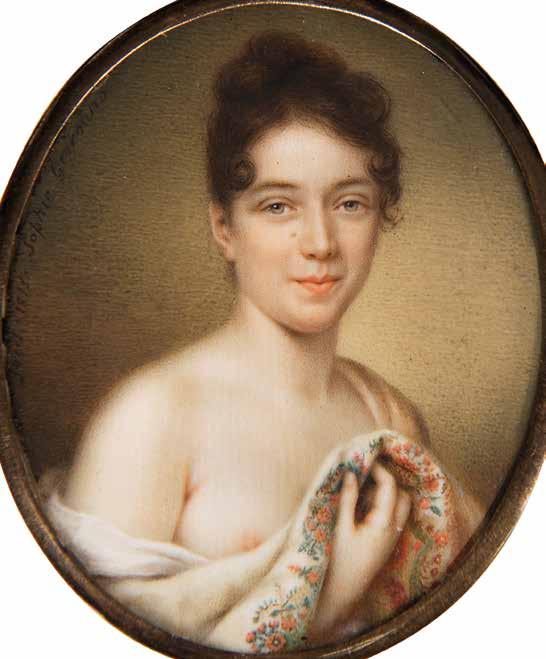WOMEN PAINTERS IN ROME Guidebook
edited by Ilaria Arcangeli
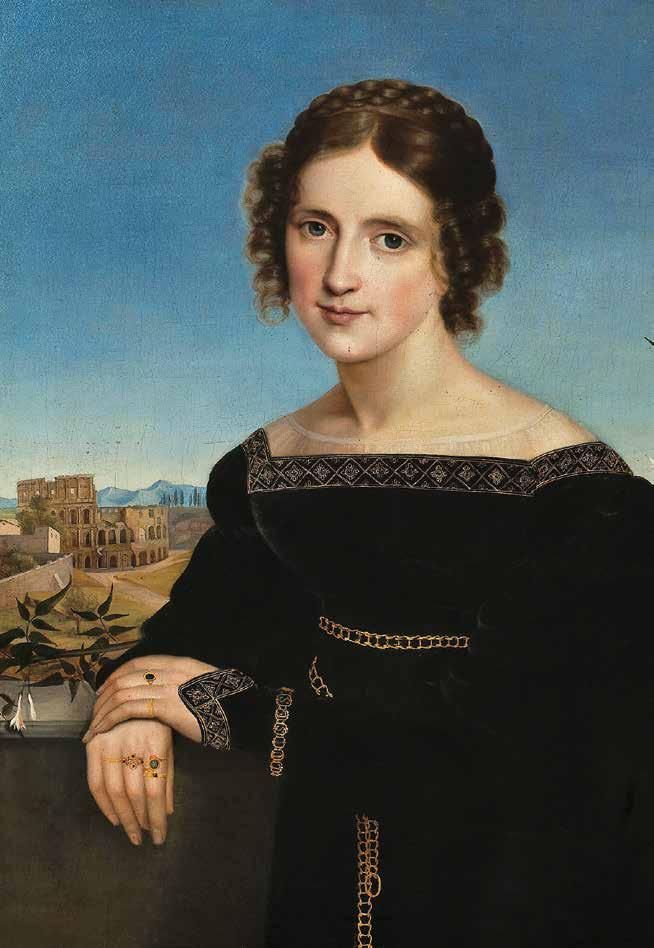


edited by Ilaria Arcangeli


The exhibition Roma pittrice. Artiste al lavoro tra XVI e XIX secolo / Rome paints. Women Artists at Work Between the 16th and 19th Centuries (Palazzo Braschi–Museo di Roma, 25 October 2024 – 23 March 2025) aims to give due prominence to the women artists who worked in Rome during the modern period. Rome is considered as a cultural epicentre and symbol of the establishment of women in the arts at a time dominated by men, simultaneously acting as a metaphor for the many women who contributed to its prestige.
The studies undertaken in preparation for the exhibition were focused on 56 women artists who worked permanently or temporarily in Rome. This reconstruction started from the Capitoline collections before moving on to other Italian and international institutions. In recent decades, research on women’s art has intensified in an effort to fill the historiographical gaps that have often relegated women to minor roles. Women artists, overlooked in the documents or whose works were mistaken for those of male masters, have been rediscovered through sporadic mentions in diaries, signatures, correspondences and self-portraits. This has made it possible at least in part to write the history of women’s art.
Women artists such as Lavinia Fontana and Artemisia Gentileschi have emerged as prominent figures, universally recognized for their contribution to art. Lavinia, originally from Bologna, brought with her a new model of the cultured woman, whilst Artemisia attempted to establish herself in an environment still ruled by prejudices and legal limitations for women. The opportunities available to women artists in Rome were often linked to family circumstances and access to the academies, like that of San Luca, essential for gaining visibility.
Despite the difficulties of the context in which they worked, women artists in Rome contributed to the development of the arts, sharing studios and interests with their male colleagues in a cosmopolitan city that drew Italian and foreign talents. Though Rome was not home in the 19th century to great international exhibitions like those held in France or England, it remained a vital centre for artistic production.
This guide aims to introduce the studies conducted in preparation for the exhibition to a much wider audience. The introductory essay by Ilaria Arcangeli thus surveys the main stages in the long and complex road to the establishment of women artists in Rome. It is followed by the biographies reconstructed by the various scholars who have collaborated on the exhibition catalogue.
The work is completed by an exhaustive map of Rome accompanied by a commentary that guides visitors around the city to discover the many works by women artists preserved in accessible places.
Ilaria Miarelli Mariani and Raffaella Morselli
The same rule was only introduced at the Accademia di San Luca, founded in 1593, a few decades later. The 1607 statutes established that women artists could be admitted if they had attained a degree of fame and made a gift of one of their works to the institution. The explicit reference to the role of women was reiterated in the statutes of 1617, which clarified that they were not permitted to attend lectures and assemblies though they enjoyed all other “academic privileges”. Gender-based exclusions seem to have remained in force until the 1790s.
The presence of numerous portraits and self-portraits in the collections of the Accademia di San Luca is clear evidence of the prestige attained by women artists. The 1633 inventory lists portraits of Sofonisba Anguissola (1532–1625) and Girolama Parasole. Some were commissioned subsequently to celebrate their subjects while others were gifts from the artists themselves. Often there are no official traces of their admission to the Academy and the lack of evidence that they ever lived in Rome suggests that many of these portraits were purely commemorative.
The oldest document confirming the presence of women in the academy is a list dated 1633 that includes both men and women as members of the institution. Among those mentioned are Caterina Ginnasi, Giovanna Garzoni and Giustiniana Guidotti. The latter died only a year after her appointment, so the document should be considered valid while her presence in subsequent lists should be interpreted as a tribute. Garzoni was admitted though she was not living in Rome, as she spent that year in Turin: we must assume that as this was an honorary position it did not require a constant presence. The same three artists are mentioned again in the 1651 list, alongside Anna Maria Vaiani and Felice Orlandi. Their names are accompanied by those of Lucia Neri and Ippolita de Biagi in the list drawn up between the late 17th and the early 18th century.
The fame achieved by Diana Scultori during her lifetime was undoubtedly a consequence of her move from Mantua to Rome. Here she was not just among the first women to be admitted to the future Accademia dei Virtuosi but was also granted a papal privilege to market prints from her copper plates, effectively supporting her family financially. Her talents as an engraver were already celebrated by her contemporaries and a coin was even struck in her honour. Scultori’s artistic career, always supported by her husband Francesco Capirani, followed a similar path to that of her brother Adamo.
The presence of a supportive family who encouraged their inclination towards engraving seems to be a crucial factor in the success of these women and their strides towards professionalization. Girolama Cagnucci, known by the last name of her husband Rosato Parasole, was a skilled woodcutter and, though difficult to document, her contribution to the family workshop was probably on a par with that of her spouse. Indeed, during the last decades of the century the Cagnucci obtained numerous commissions to create series of illustrations for printed texts and Girolama herself left her initials on a plate representing a scene of martyrdom. We know little about her sister-in-law, Elisabetta Cattaneo, originally from Bergamo and a skilled embroiderer who perfected, or perhaps even learned, this ancient art, the most commonly practiced by women, at the school of Santa Caterina. The question remains whether she also practiced woodcut printing, since the embroidery patterns she published in Rome between 1595 and 1600 provide no more detailed information.
The Roman publishing sector was booming towards the end of the 16th century and the production of sacred images drawn from paintings by renowned artists and used to illustrate printed repertoires in various fields of knowledge commissioned by leading figures at the papal court increased demand, favouring the inclusion of some women in this lively cultural sphere. Prime among them was Teresa del Po, who began her career in this field before specializing in miniature painting after her move to Naples. Not unusually, Del Po collaborated with an artist, the unknown Angelica Roncalli, who made drawings that she then translated into print. Indications of collaboration and mutual support are very common, although it is not always possible to trace the trajectories of these
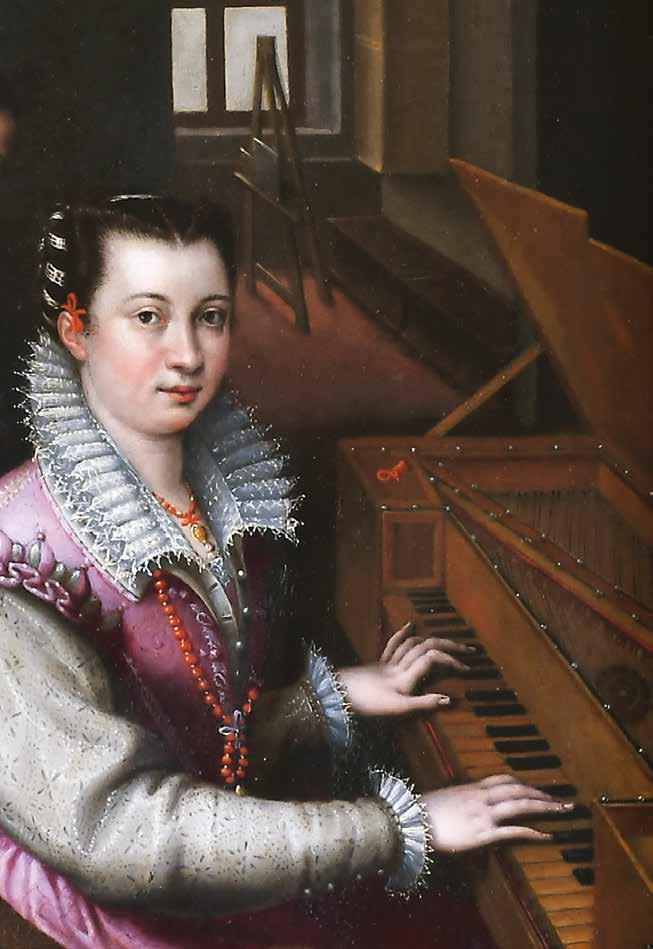

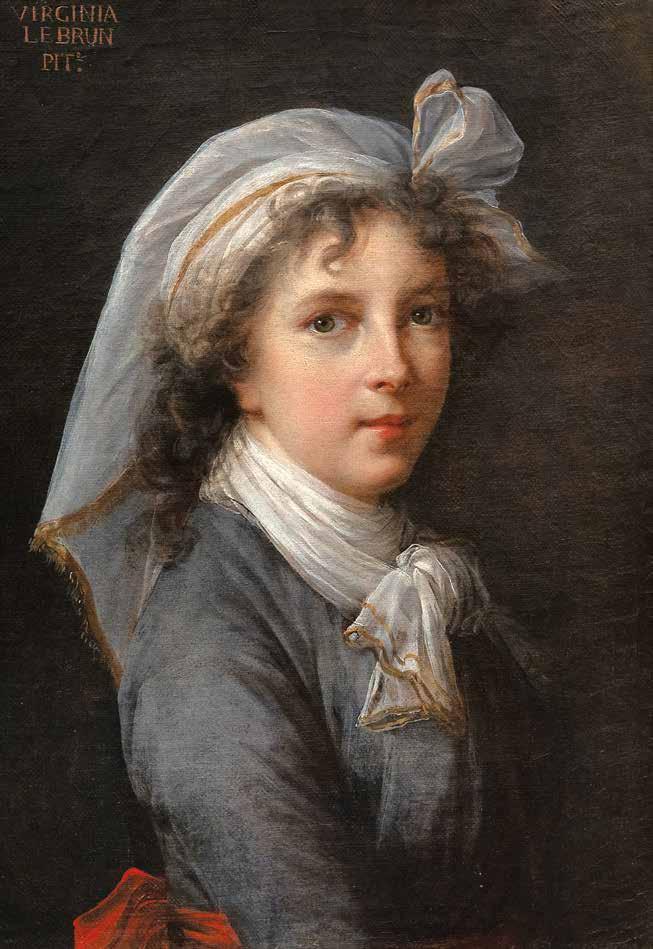

exception within the vast and wide-ranging phenomenon of monastic communities. The dispersal of many archives due to the closures suffered by these institutions over the centuries has led to the loss of extremely important sources as well as the works produced or commissioned for the interiors of convents.
From the Accademia di San Luca to the Arcadian Academy
Towards the end of the 17th century, when the Arcadian Academy was founded, the cultural climate in Rome was focused on the rediscovery of good taste, aspiring to establish a new social model in which women played an active and direct role. This cultural climate was favoured by the active presence in the city of Christina of Sweden. At the start of the new century, many Italian and foreign women artists settled in Rome, giving new impetus to the worlds of art and literature with their entry into the Arcadian Academy and the Accademia di San Luca, which continued to play a leading role. One of the first members of the Arcadian Academy, already in 1704, was Faustina Maratti. After initially working as a painter, she abandoned the brush for the pen and devoted herself to her passion for poetry. The daughter of Carlo Maratti, one of the most acclaimed artists of his time, she learned the first rudiments of drawing thanks to her father’s teachings. She was appreciated for her eloquence to the extent that she was considered a source of inspiration by her contemporaries. An example is the portrait in the Pinacoteca civica “F. Podesti” in Ancona, which, though a work of fantasy, presents her as a fashionable lady holding a manuscript composition and the inscription “Faustina Maratti painter and poetess”. Her many talents allowed her to shine not for her family origins but for her writings, distinguishing herself among Roman intellectuals as a woman author. After her, other women painters also entered the academy: Maria Felice Tibaldi (1749), Caterina Cherubini (1766) and Marianna Candidi.
Between the 18th and 19th centuries, many women miniaturists graced the Roman market with their creations, particularly sought after by Grand Tourists. Maria Felice Tibaldi’s talent was celebrated by her contemporaries, who wrote that already by the age of twelve she was supporting her family financially. Over the course of her career, she experimented with small-format copies of works by the most famous artists, including those of Pierre Subleyras whom she married in 1739, successfully introducing him to Roman patrons. One of the most important recognitions came in 1752 when her copy of the Dinner at the House of Simon the Pharisee became the first painting by a living artist to be purchased for the Capitoline collection (where it can still be found today). According to the sources, Tibaldi also painted in oils; proof of this can be found in her portrait by Subleyras (now in the Worcester Art Museum), where a medium-sized canvas with a figure in a melancholic pose is visible in the middle ground. Maria Felice’s legacy was continued by her sister Teresa and daughter Clementina.
Caterina Cherubini’s miniatures were also highly sought-after. She specialized in executing small works on copper, copies or inventions inspired by Bolognese and Roman classicism. After marrying her teacher Francisco Preciado de La Vaga, Cherubini travelled with him from Italy to Spain, becoming a member of both the Accademia di San Luca and the Academia de San Fernando (Madrid) between 1760 and 1761.
Therese Concordia Mengs was another specialist in this art, attaining the prestigious position of court miniaturist in Dresden in 1745, after living for a few years in Rome. She returned to the city in her forties and married the painter Anton Von Maron. After her admission to the Accademia di San Luca, she opened a studio-school attended by many women artists, including Marianna Waldestein from Vienna and Sofia Clerk from Turin.
Linda Nochlin, “Why have there been no great women artists?” ARTnews (1971), 22–39.
Women Artists: 1550–1950, exhib. cat. (Los Angeles–Pittsburgh–Brooklyn 1976–77), ed. by Ann Sutherland Harris, Linda Nochlin. New York: Knopf, 1976.
Anna Banti, Quando anche le donne si misero a dipingere. Milan: La tartaruga, 1982; 2nd ed. Milan: Abscondita, 2011.
Franca Trinchieri Camiz, “Virgo-non sterilis… Nuns as Artists in Seventeenth-Century Rome.” In Picturing Women in Renaissance and Baroque Italy, ed. by Geraldine A. Johnson, Sara F. Matthews Grieco. Cambridge: Cambridge University Press, 1997, 139–64.
Simona Feci, Pesci fuor d’acqua: donne a Roma in età moderna: diritti e patrimoni. Rome: Viella, 2004.
Susanne Adina Meyer, “Le mostre in Campidoglio durante il periodo napoleonico.” In Fictions of Isolation: Artistic and Intellectual Exchange in Rome During the First Half of the Nineteenth Century, ed. by Lorenz Enderlein, Nino Zchomelidse. Rome: L’Erma di Bretschneider, 2006, 29–47.
Julia Vicioso, Costanza Francini tra Artemisia Gentileschi e le committenze della Compagnia della Pietà in San Giovanni dei Fiorentini a Roma. Rome: GBE Bentivoglio, 2014.
Sylke Kaufmann, Louise Seidler (1786-1866) –Leben und Werk: mit einem Œuvreverzeichnis ihrer Ölgemälde, Pastelle und bildmäßigen Zeichnungen. 2 vols. Bucha bei Jena: Quartus-Verlag, 2016.
Le donne nel cantiere di San Pietro in Vaticano. Artiste, artigiane e imprenditrici dal XVI al XIX secolo, ed. by Assunta Di Sante, Simona Turriziani. Foligno: Il Formichiere, 2017.
La grandezza dell’universo nell’arte di Giovanna Garzoni, catalogo della mostra (Florence 2020), ed. by Sheila Barker. Leghorn: Sillabe, 2020.
Le Signore dell’Arte. Storie di donne tra ’500 e ’600, exhib. cat. (Milan 2021), ed. by Annamaria Bava, Gioia Mori, Alain Tapié. Milan: Skira, 2021.
Caravaggio e Artemisia. La sfida di Giuditta: violenza e seduzione nella pittura tra Cinque e Seicento, exhib. cat. (Rome 2021–22), ed. by Maria Cristina Terzaghi. Rome: Officina Libraria, 2021.
Carlotta Gargalli 1788-1840 Una pittrice bolognese nella Roma di Canova, exhib. cat. (Bologna 2023), ed. by Ilaria Chia, Francesca Sinigaglia. Bologna: MiG, 2023.
Now You See Us. Women Artists in Britain 1520–1920, exhib. cat. (London 2024), ed. by Tabitha Barber. London: Tate, 2024.
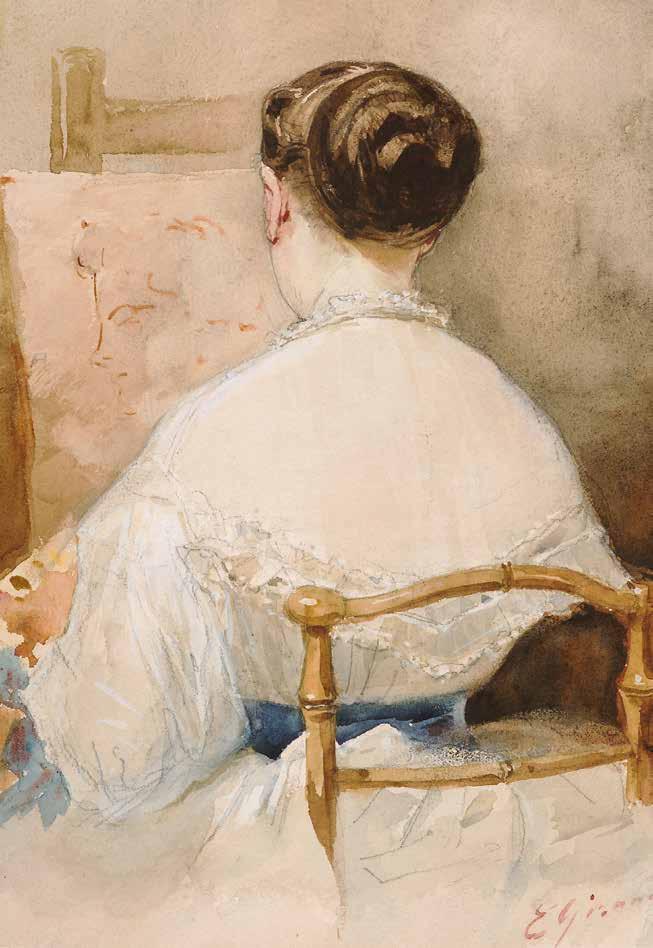

The women artists are presented here in alphabetical order by their maiden names; where relevant their married name, often better known, is also given. Some of the women artists included have been studied in depth here for the first time while for others further archive research has led to new discoveries. The biographies thus reconstructed, focusing exclusively on their work in Rome, are accompanied by an essential reference bibliography. Each artist is accompanied by an image depicting one of her most important paintings or a work in which she is portrayed.
Virginia Barlocci (Riccardi; Mariani) (Rome, 1824–1898)
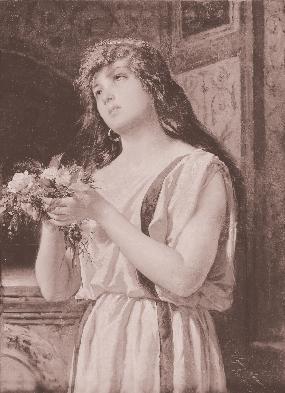
Virginia was a Roman painter and ceramicist, the student of the Purist painter from Parma Bernardi no Riccardi (Parma, 1814 – Rome, 1854), whom she married in 1854, just over a month before his death in October of the same year. To her husband the paint er dedicated a funerary memorial still in the church of Santa Maria sopra Minerva in Rome. In 1861 she participated in the Esposizione italiana with six works entered in category XXIII: Painting, Engraving, Drawings and Lithographs. In the di Roma published by Alessandro Rufini in the same year, we learn that she worked as a teacher “of water colour painting – Piazza di Santa Chiara no. 49, third floor”, while on 6 November 1862 she was appointed member of the Congregazione dei Virtuosi al Panthe on and in 1879 of the Accademia di San Luca. The painter was an active participant in the artistic life of Rome, displaying on several occasions at the annual exhibitions of the Società degli amatori e cultori delle belle arti of Rome. In 1864 the Giornale di Roma ed that “a little painting by Signora Barlocci was also admired; she is one of the most distinguished mem bers of the fairer sex who grace the arts in Rome”. The artist is also mentioned in the catalogue of the Esposizione internazionale di belle arti held in Rome in 1883, on which occasion she exhibited in her dual capacity as painter and ceramicist. The private collection of the artist Cesare Mariani, the painter’s husband from 1863, formerly included two of the works later acquired for the collections of the Museo di Roma (inv. MR 20706; MR 20709) .
Congedo, 2015, 777; Angelo De Gubernatis, s.v. Dizionario degli artisti italiani viventi. Pittori, scultori e architetti. Florence: Le Monnier, 1889, 281.
Michela D’Agostino
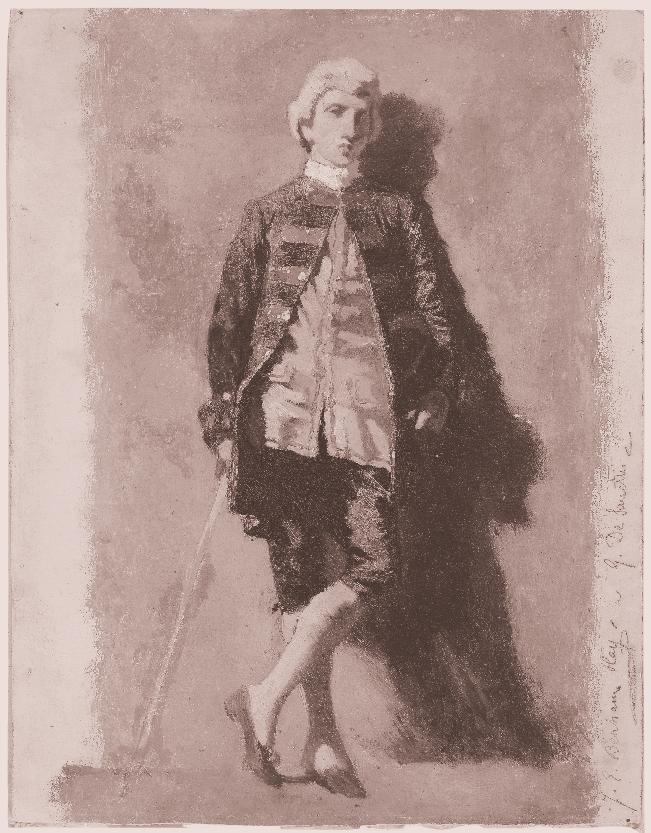
Jane Benham (Hay) (London, 1829 – Brussels, 1904)
bibliography: Anna Lisa Genovese, “Diario 1852–1877.” In Vitaliano Tiberia, La Congregazione dei Virtuosi al Pantheon da Pio VII a Pio IX. Galatina:
An important Pre-Raphaelite artist, Jane Benham was active in Italy in the second half of the 19th century. She first trained in London with William Riviere and then with Wilhelm von Kaulbach in Munich, where she had travelled with her friend, the painter Anna Mary Howitt. After marrying the artist William Milton Hay, she settled in Paris in 1852. Here she met Saverio Altamura who became her life partner after 1855, the year of her move to Florence. In the Tuscan city, Jane was an active participant in the art world, displaying at the exhibitions of the Promotrice delle Belle Arti, a society for the promotion of the arts, and at the studio she shared with Altamura in Via del Mugnone. Probably towards the end of the 1850s Benham travelled to Rome, a fundamental destination for artists, as attested by the small oil on cardboard in the Museo di Roma, depicting a Male Figure in Eighteenth-Century Clothes (inv. MR 44979), and the painting with a Roman Costume presented at the Promotrice of 1860; on the same occasion Altamura displayed the Remnant of a Roman Aqueduct. These subjects clearly reflect the experiments undertaken during their stay in Rome, aimed at the study of local costumes and, both here and in Tuscany, of the landscape. The time spent in Italy and her relationship with Altamura were fundamental in the artist’s career. In addition to gaining a deeper knowledge of 15th and 16th century art, she turned her hand to the practice of plein-air painting: the letters of Barbara Bod-
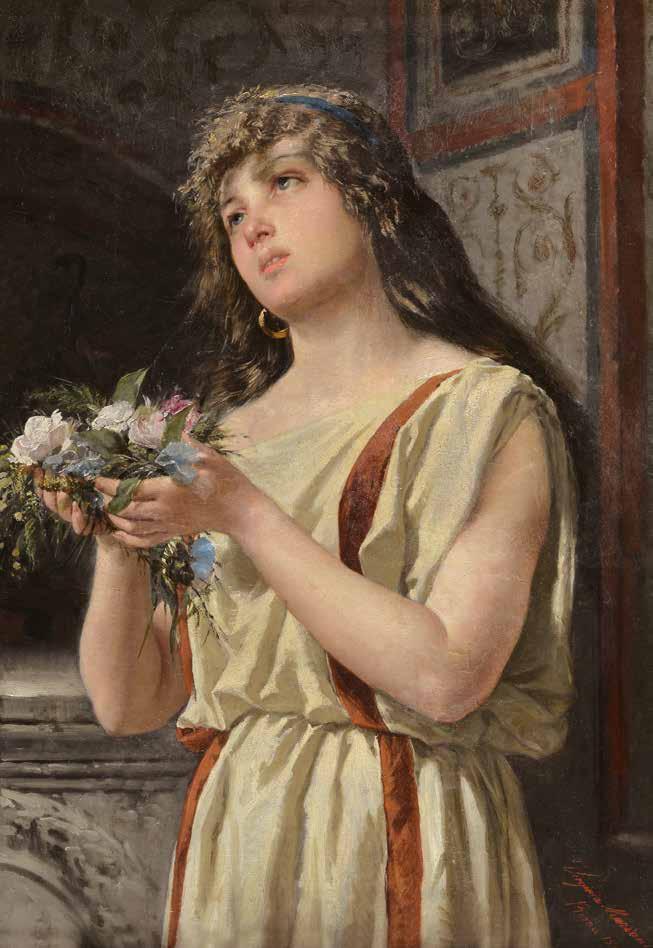

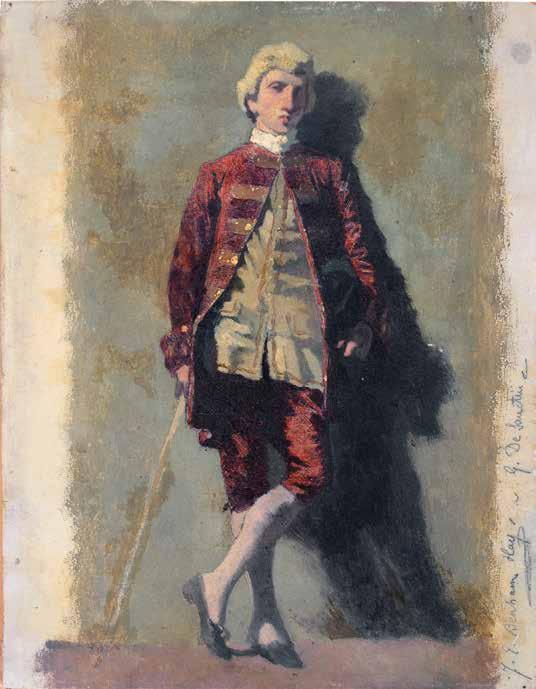
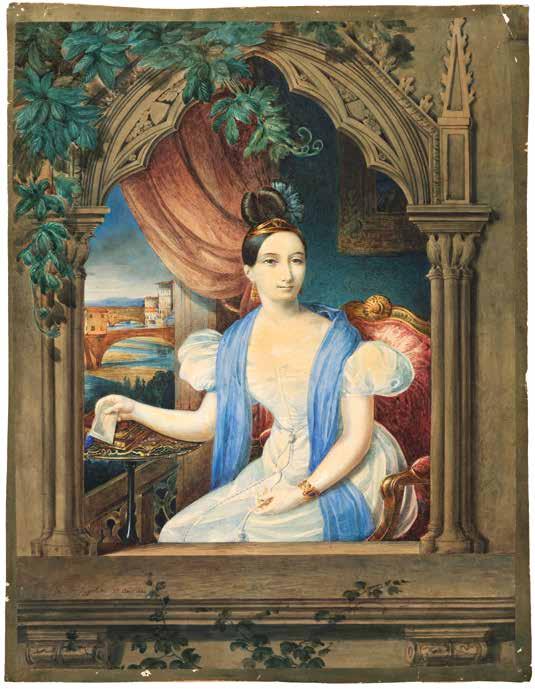
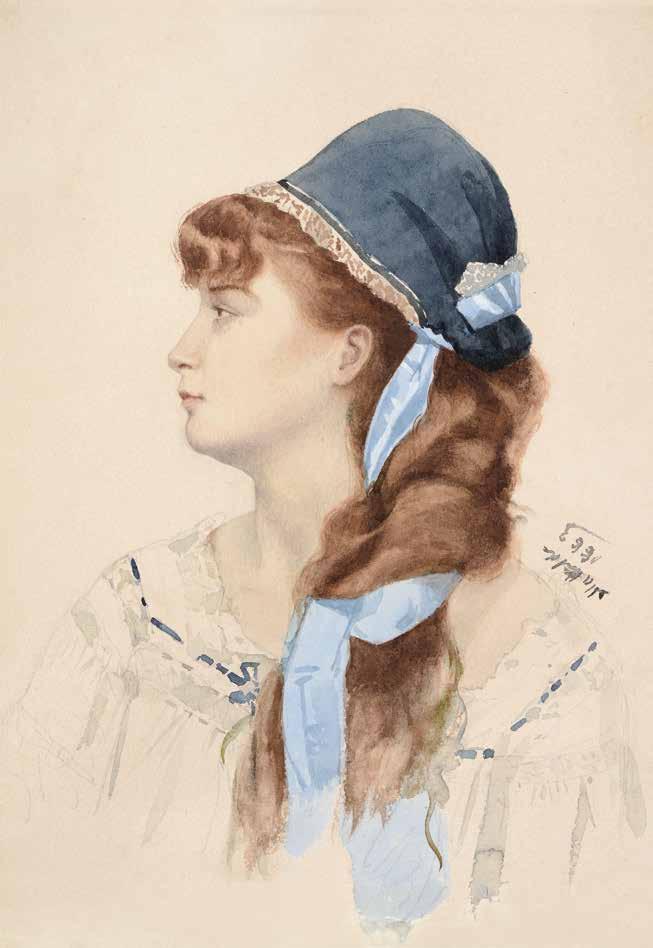

in Lucina. She separated from him immediately afterwards for unknown reasons and never took his last name. In 1809 she participated in the ex hibition held at the Capitoline with a Blessed Vir gin and Child. On his arrival in Rome in November 1811, the French poet Alphonse de Lamartine pur chased from her a Virgin copied from the Madonna in Sorrow by Guido Reni in the Galleria Corsini. As he later recalled in his Mémoires, during one of the sessions in which he sat for a portrait intended for his mother, Lamartine confessed to the beauti ful Bianca that he had feelings for her. Bianca was so offended that she destroyed the portrait and re turned the advance.
A correspondence that re-emerged only in the first half of the 20th century documents Bianca’s rela tionship between 1814 and 1819 with a Napoleonic officer stationed in central-southern Italy, ClaudeJean (called Constant) Papillon (1778–1845). In the 1820s and 30s, she appears with regularity – with an address at Via Felice no. 30 – among the Roman artists mentioned in the guides for travellers, including the popular Travels in Europe by Mariana Starke. On 22 May 1825 she was elected member of the Accademia di San Luca. The last evidence of her work is an affidavit of 18 May 1844, from which it appears that she was living in Via delle Carrozze no. 98. In her will, dated 3 August 1852, she left her estate to her four artist nieces. On 27 September 1857, she died at the age of almost seventy-two, in her last home in Via della Purificazione no. 18.
bibliography: Léo R. Schidlof, The Miniature in Europe. 4 vols. Graz: Akademische Druck- u. Verlagsanstalt, 1964, 1:94–5; Bernardo Falconi, “Bianca Boni «miniatrice romana» (1786–1857).”
Bollettino dei musei comunali di Roma new ser. 28 (2014), 83–110.

Ida Botti (Scifoni) (Rome, 1812 – Florence, 1844)
Alessandra Masu
“Idda Scifoni nata Botti romana […]” (Idda Scifoni née Botti from Rome). This is how the painter specializing in portraits and genre painting, the daughter of Tommaso Botti and Carolina Jesi, signed herself on the back of the famous SelfPortrait in the Galleria d’Arte Moderna in Florence’s Palazzo Pitti (inv. 1830, n. 1938). As noted by the historian Giovanni Spallicci, who included her in his “little work” devoted to “illustrious Italian women” worthy of study in schools, she began to draw at the age of nine. At fourteen she became a member of the class of painters of the Congregazione dei Virtuosi al Pantheon, having formerly been the student of Giovanni Silvagni, a well-known member of the Accademia di San Luca and, like her, of the Virtuosi al Pantheon, who had trained Amalia De Angelis and Emilia Rouillon. In 1830 Botti was living “at the Scalone di San Francesco ai Monti”, as reported in the section dedicated to “History and portrait painters” of the list “for the use of foreigners” compiled and updated by Enrico de Keller Four years later, in 1834, Giuseppe Brancadoro took up and renewed the list, giving a new address in Via del Corso no. 142. According to the testimony of Melchiorre Missirini, “she left various panels of her own composition in Rome, including “the fine story from Tasso with Erminia writing on the tree trunks the beloved name of Tancredi, purchased by Tommasini, general secretary of the Camerlengate […] a half-length Bacchant bought by the society for the display and support of art works founded in Rome […] Medicine, a half-length symbolic painting, kept in the home of the illustrious Roman clinician Professor Giuseppe de Mattheis”. From 1836 the painter settled in Florence after mar-
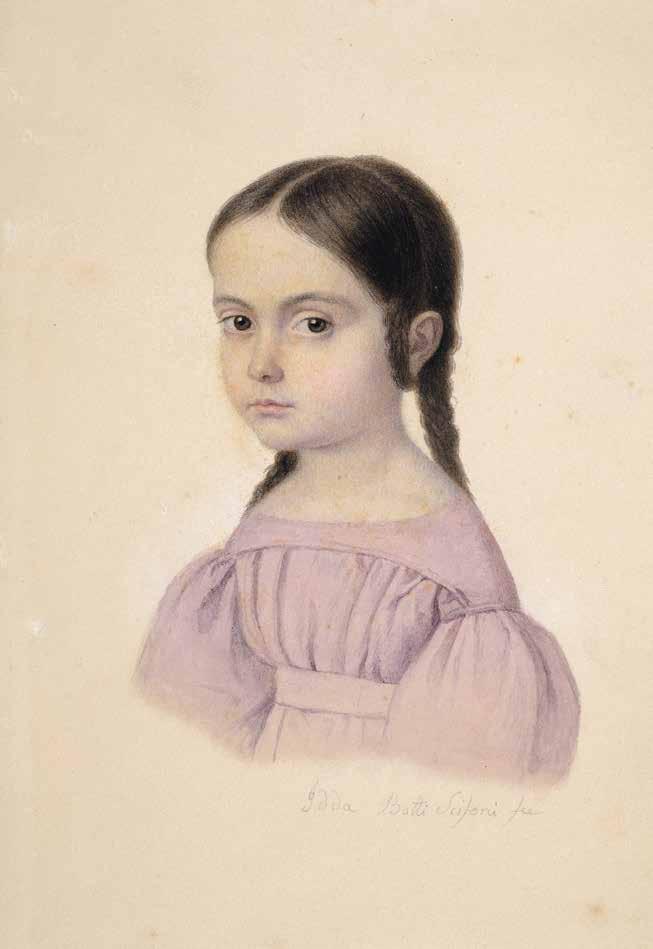

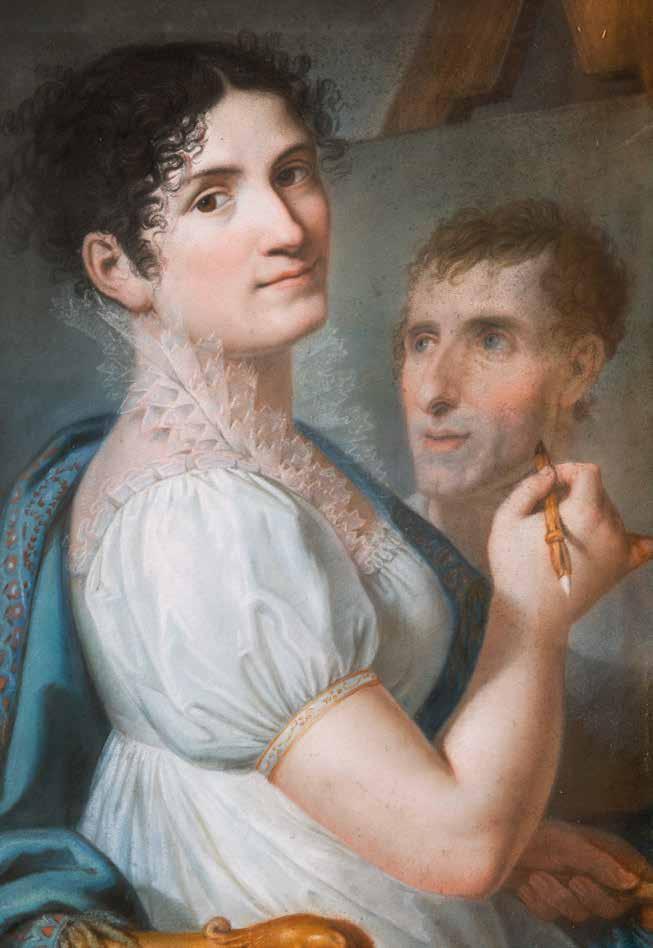

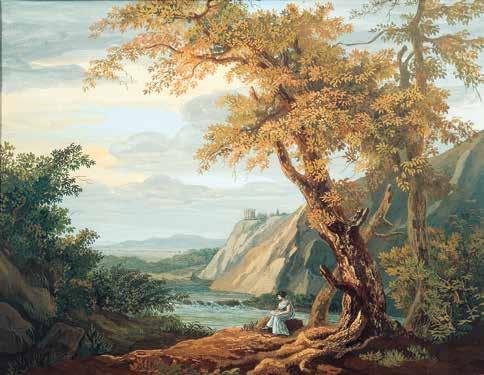
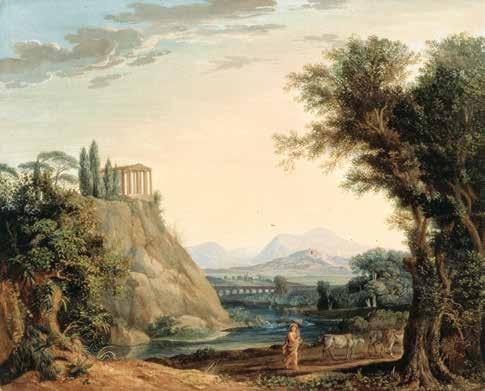
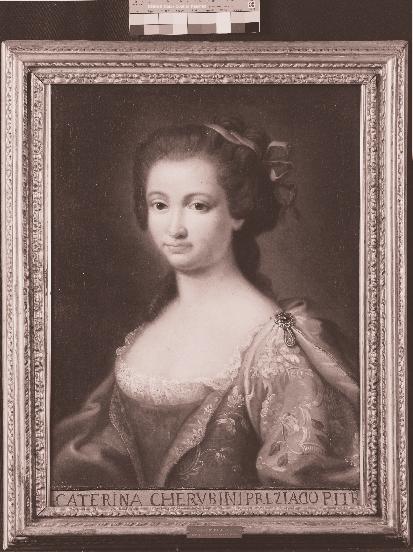
Cherubini (Preciado) (Rome, c. 1728–1811)
Caterina Cherubini’s work is mentioned by numerous sources, none of which predates 1750, the year of her marriage to the Spanish artist Francisco Preciado de La Vega (1712–1789), from 1758 supervisor of the Spanish artists who had won bursaries to study in Rome. By this time the painter, thought to belong to a family originally from Aragon and, as clarified by the studies, no relation to the painter Giovanni Domenico Cherubini, had already received an artistic education in her husband’s studio. After specializing in copying the masterpieces belonging to Roman collections, Caterina embarked upon a highly productive and much appreciated career as a miniaturist. Thanks to this work, she was proposed by the Spanish ambassador Manuel de Roda y Arrieta as a candidate for the position of Chamber Painter to the king of Spain, “a rash judgement: I am not enamoured of her, as the faces that she paints are more beautiful than her own”. This testimony refers to her earliest known works, like the faces modelled on Carlo Maratti, including that donated in 1760 to the Accademia di San Luca when she was elected member (inv. 497) and the Madonna and Child presented in 1763 to the monastery of the Santissima Trinità degli Spagnoli. The painting in oil on canvas depicting Justice and Peace, a copy after Ciro Ferri, is connected to her appointment to the Real Academia de Bellas Artes de San Fernando in Madrid in 1761 (inv. 0208), while a copy after Guercino that has not been traced marks her election to the Accademia Clementina in Bologna (1778). Caterina Cherubini is also known to have had an interest in literary writing that dates to over ten years earlier; already in 1766, she had become a member of the Arcadian Academy with the pseudonym of Ersilla
Ateneia. The works mentioned in the documents are very numerous: the St Francis Consoled by the Angel (Valladolid, private collection) dates to 1769, as does the exquisite little painting of St Agnes in the Museo del Prado (inv. P004699). Her most important set of works is the series of miniatures sent from Rome to Madrid at annual intervals from 1774 to 1804, fulfilling the obligation incurred when the King of Spain Carlos III granted the painter 3000 reales. None of these copies, mentioned in the correspondence between José Nicolas de Azara, José Moñino y Redondo Count of Floridablanca and Marquis Girolamo Grimaldi, can be traced. However, it is credible that within the royal collections they formed a cabinet de réception by one of the most talented European miniaturists, as can be seen today in a watercolour after Guido Reni’s Dawn (Tarragona, Martínez Lanzas collection). A self-portrait by the painter was in the collection of the Marquises of Loreto in Seville, while a portrait of her traditionally attributed to Anton von Maron is in the Accademia di San Luca (inv. 450).
bibliography: Jesús Urrea, Relaciones artísticas hispano-romanas en el siglo XVIII. Madrid: Fundación de Apoyo a la Historia del Arte Hispánico, 2006, 161–65. Vanda Lisanti
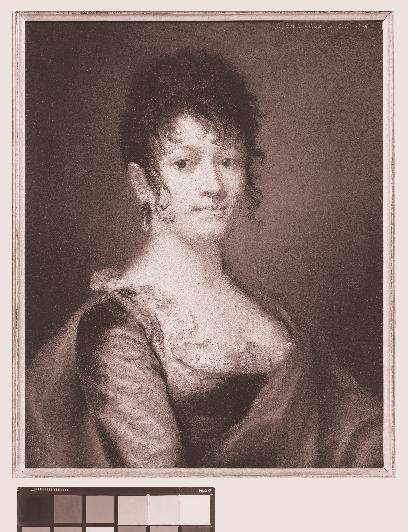
Sofia Clerk (Giordano) (Turin, 1778–1829)
Sofia Clerk was born in Turin on 30 April 1778. Perhaps the daughter of the painter Pietro Antonio Clerk, she began to study painting from childhood on the advice of the printmaker and draughtsman Pietro Giacomo Palmieri, who recognized her precocious talent. Thanks to the financial support of
